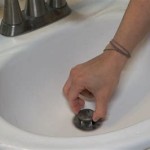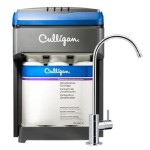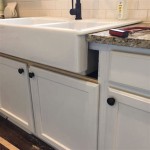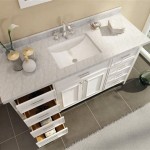Over Sink Kitchen Light Fixtures: Illuminating Form and Function
The kitchen sink area is a hub of activity, demanding effective lighting for various tasks, from food preparation and cleaning to dishwashing. Over sink kitchen light fixtures play a crucial role in providing this illumination while enhancing the overall aesthetic of the space. Choosing the right fixture involves considering factors such as size, style, light output, and installation requirements.
One of the primary considerations when selecting an over sink light is its size. The fixture should be proportionate to the sink and the surrounding area. For smaller sinks, a single pendant light or a small linear fixture might suffice. Larger sinks, particularly those on kitchen islands, may benefit from larger fixtures, such as multi-light pendants or chandeliers. Measuring the sink and the available space above it is crucial for selecting a fixture that fits comfortably without overwhelming the area.
Style is another important factor. Over sink lighting should complement the overall kitchen design. For modern kitchens, sleek linear fixtures or minimalist pendants in metallic finishes can be a suitable choice. Traditional kitchens might benefit from more ornate fixtures, such as chandeliers or pendants with decorative glass shades. Farmhouse kitchens often incorporate industrial-style pendants or fixtures with rustic finishes. The style of the fixture should harmonize with the existing cabinetry, hardware, and other design elements.
Light output is a critical consideration for functionality. The fixture should provide ample illumination for tasks performed at the sink. Lumens, a measure of light output, are a helpful metric for comparing fixtures. Consider the size of the sink area and the desired level of brightness when evaluating lumen output. Additionally, the color temperature of the light should be considered. Warmer color temperatures create a cozy ambiance, while cooler temperatures provide a brighter, more task-oriented light. The specific needs of the space should dictate the chosen color temperature.
Installation requirements vary depending on the type of fixture and the existing wiring. Some fixtures can be easily installed by replacing an existing fixture, while others may require new wiring or professional installation. It is essential to assess the existing electrical setup and choose a fixture compatible with the available wiring. Consulting a qualified electrician is recommended for complex installations or when working with unfamiliar electrical systems.
Different types of over sink light fixtures offer various advantages and disadvantages. Pendant lights are a popular choice, offering versatility in style and size. They can be hung individually or in groups to create a focal point above the sink. Linear fixtures are another option, providing even illumination over a larger area. They are particularly well-suited for longer sinks or kitchen islands. Flush-mount fixtures are a discreet option that sits close to the ceiling, ideal for spaces with limited overhead clearance.
Material selection plays a role in both aesthetics and durability. Glass shades offer a classic look and can diffuse light effectively. Metal finishes, such as brushed nickel, chrome, or brass, can complement various kitchen styles. Natural materials, such as wood or rattan, can add a touch of warmth and texture. The chosen material should be resistant to moisture and easy to clean, given the proximity to the sink.
Energy efficiency is an increasingly important consideration. LED lights offer significant energy savings compared to traditional incandescent bulbs. They also have a longer lifespan, reducing the need for frequent replacements. Look for fixtures with an Energy Star rating to ensure optimal energy efficiency.
Maintenance requirements should also be factored into the decision-making process. Fixtures with intricate designs or delicate materials may require more frequent cleaning or specialized care. Choosing fixtures with easy-to-clean surfaces and durable materials can simplify maintenance.
Budget is another practical consideration. Over sink light fixtures are available at a wide range of price points. Setting a budget beforehand can help narrow down the options and ensure that the chosen fixture aligns with financial constraints. Consider the long-term value and energy efficiency when evaluating the cost of a fixture.
Beyond functionality, over sink lighting can contribute significantly to the overall ambiance of the kitchen. The right fixture can create a focal point, enhance the existing design elements, and establish the desired mood. Careful consideration of style, size, and light output can transform the sink area into a well-lit and visually appealing space.
Safety is paramount when installing any electrical fixture. Always turn off the power at the breaker box before starting any electrical work. If unsure about any aspect of the installation, consult a qualified electrician to ensure the safety and proper functioning of the fixture.

The 15 Best Over Kitchen Sink Lighting Ideas Lightopia

Rustic Farmhouse Light For Country Decor Wooden Beam Ceiling Fixture Kitchen Strip Replacement With Hanging Pendant Lights Etsy

Favorite Flush Mount Light Fixtures And New Sink Nesting With Grace

How To Light Up The Kitchen Sink With Style Inspiration Barn Electric

Over Kitchen Sink Lighting How To Enlighten Your Cooking Space

Kitchen Lighting Ideas The Home

Choosing Kitchen Light Fixtures Lighting Design Tips

1 Light Indoor Hanging Kitchen Island Pendant Lights 5 8 Glass Fixtures Modern Farmhouse Dinning Over Sink Blue Seeded 3 Pack Wal Com

Install A Sconce Light Above The Kitchen Sink Tylynn M

Light Fixture Over Kitchen 2025 Sink







